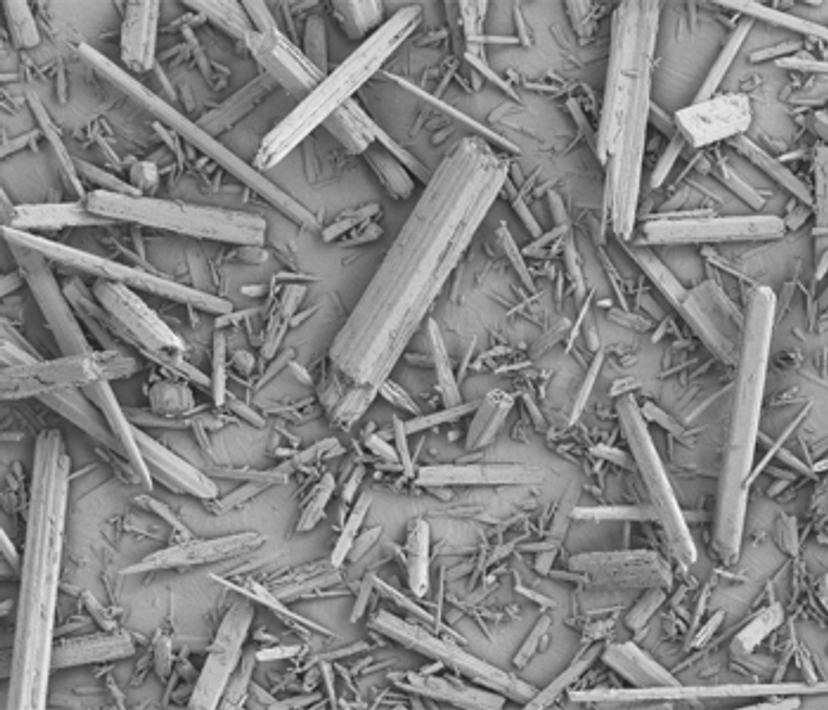Solid form screening and selection: Why chemistry-led design brings the greatest value to pharmaceutical development
Guest editorial by Kim James, Solid Form Expert, LGC Drug Development Solutions
18 Apr 2021

All candidates for development as pharmaceuticals will require screening to identify which solid forms are available whether free compound, salt, cocrystal, hydrate, or a polymorph of these. This is for two main reasons; firstly the FDA mandates such a study before clinical use, and secondly, appropriate solid form selection allows optimization of properties for each stage in development. This gives the valuable candidate the strongest case in the competition for development resources and the highest probability of progression to the next milestone. Early development will focus on toxicological and efficacy studies for which key issues are in vivo bioavailability and exposure hence solid form selection will be dominated by solubility, dissolution rate, and stability.
Novel crystalline forms will also extend patent coverage and greatly increase the efficiency of larger-scale synthesis. As development progresses requirements may alter, for instance, identification of a solid form suitable for clinical use will be informed more by formulation studies and will involve increased scrutiny of safety and cost. Route of administration will also have a bearing on solid form selection, for instance, i.v. formulations will require solubility in a benign aqueous vehicle and delivery by dry powder inhalation uses predominantly fully crystalline non-hygroscopic forms that are stable to micronization.
LGC's belief is that the application of organic chemistry in screen design, analysis, and interpretation of results is powerful in creating efficient screens, optimized forms, and positive recommendations of immediate utility to the customer.
The multidisciplinary nature of the screening process means that effective collaboration and communication between experts in different fields is necessary to create and perform efficient screens that deliver appropriate value to the customer.
Screen Design
Since solid form screening is essentially pure chemistry the screen design is best led by an experienced chemist.
The understanding of properties such as pKa (particularly as it is affected by solvent), hydrogen bond strength and directionality, stability to acids and solvent/acid compatibility are fundamental to successful synthetic and medicinal chemistry. These are extremely useful in designing effective salt and cocrystal screens, particularly to avoid wasting material on trials that have a minimal chance of success or create impurities (such as alkyl sulfonates from alcohols and sulfonic acids) that are known toxins.
It is essential that the screen design needs to balance efficiency with sufficient breadth to ensure minimal exclusion of possible hits.
When both screen designer and customer are chemists mutual technical understanding makes the design process straightforward and the goals and scope are readily defined. Where the customer is involved in formulation science, however, focus on the usefulness of any crystalline hits requires that the designer also understands some of the language of material science analysis and the relevance of analytical techniques such as PXRD, DSC, DVS etc.
Of note is that computational approaches to solid form structure and morphology are gaining in sophistication, particularly for polymorph and cocrystal prediction using molecular shape as a key parameter and their predictive power and usefulness in screen design will no doubt increase in future.

Screen Execution
A background in practical organic chemistry is most likely to encompass the necessary skill of accurate small-scale sample handling (such samples may have potent biological activity or be unstable or hygroscopic).
Analysis
A wide range of analytical techniques are involved in solid form analysis. Those that are familiar to chemists include NMR, DSC, KF, m.p. and solubility. Less familiar to chemists are the more specialist materials science techniques including PXRD, TGA, DVS, FT-IR, SEM, dissolution rate etc. Therefore, the breadth of techniques needed for a complete understanding of the solid form needs expertise from both chemists and materials scientists.
Interpretation and recommendations
Results from screening may be delivered to customers working in a range of scientific disciplines such as synthetic and medicinal chemistry, process research, and formulation and material science. Each stage of screening from design to interpretation and recommendation benefits from input from chemists (synthetic, medicinal, process, and computational), materials scientists, and pharmaceutical scientists. To avoid misunderstanding and wastage constant attention should be paid to compound development status and the use for which the solid form is required.
Results from solid form screening have limited value unless they are interpreted in the context of customer use, for instance, a crystalline salt that exists as a solvate may be useful as a synthetic intermediate but of limited value in formulations for toxicity studies. Similarly, a novel cocrystal may fail routine formulation assessment unless there is an appreciation that rapid dissociation often occurs under aqueous conditions.
Problem Solving
A collaborative approach to solid form issues is the most powerful way to deliver useful solutions. Once again, understanding the chemistry occurring in the screen informs any redesign. For instance, the fact that carboxylic acids under the non-aqueous conditions of screening are able to form cocrystals with weaker bases will provide further solid form options where stronger acids have failed to make viable salts. A compound that shows a strong tendency to form an unstable hydrate under polymorph screening conditions may well form stable cocrystals if the correct H-bond donor/acceptor balance can be achieved.
Conclusion
An optimized solid form screening and selection service will, therefore, be driven by chemistry expertise paying due regard to the multi-disciplinary nature of the process. Collaboration with specialists in other scientific areas is key to ensure that the screen is efficient and delivers results of immediate use to the customer whatever the development stage of their candidate.
LGC’s Drug Development Solutions offers a chemistry-led collaborative approach through its Solid Form Screening and Selection Centre of Excellence. To discover how we can help achieve the optimal solid form for your drug candidate visit our website here.
Discover how to improve your drug discovery workflow in our Advances in Drug Discovery Special Feature>>

